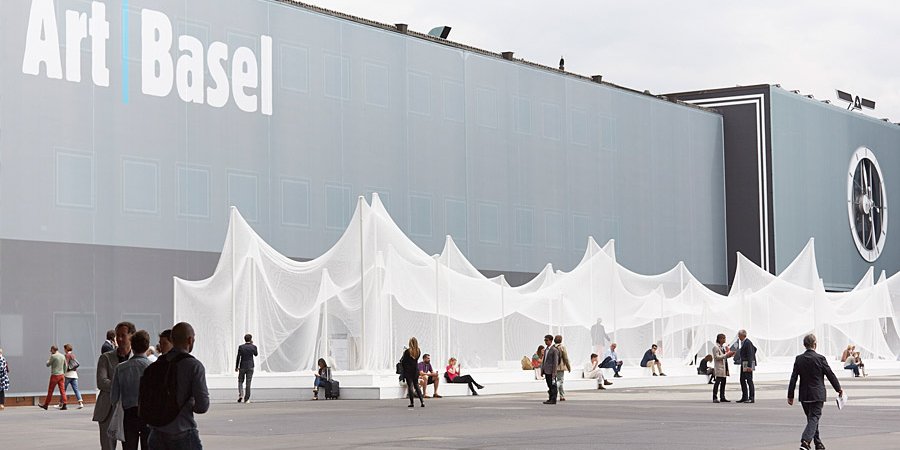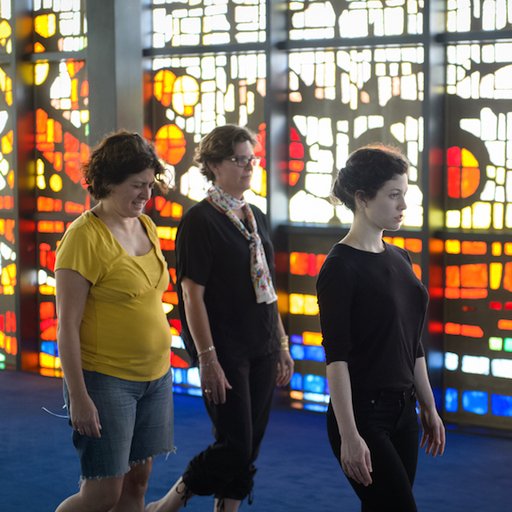Even as the art world has become thoroughly saturated with fairs, Art Basel’s flagship event has maintained its air of prestige and exclusivity. Dealers are expected to bring their A games to this international show in Switzerland, which this year features offerings from almost 300 top galleries in what has become a massive citywide arts week.
As Art Basel’s director Marc Speigler notes in our recent interview, the fair maintains its primacy in part through a strict application process—a fine sieve intended to allow only the best of the best to pass through. The expanding interest in fine art across all sectors means that entry into the fair becomes more and more difficult each year, even for established galleries. But with some clever strategizing on top of the requisite first-class material, it’s possible to land a spot. Artspace's Dylan Kerr spoke to several gallery directors from around the world to obtain their advice for getting into Art Basel—and for what to do immediately after you make the cut. We’ve compiled their responses into five sort-of simple steps. Try to follow them (if you dare).
1. DECIDE THAT YOU'RE READY FOR THE BIG SHOW
Art Basel is by no means a beginner’s fair; the show is for established galleries only, and the dreaded selection committee (made up of a panel of six expert gallerists from around the world) takes its job of weeding out the weaker applications very seriously. With such an involved and expensive endeavor, it only makes sense to apply if you can reasonably expect to be given serious consideration—and even then you’ll be up against stiff competition. Susanne Vielmetter of Susanne Vielmetter Los Angeles Projects notes that while she’s participated in Art Basel Miami Beach (the fair’s glitzy American offshoot) “almost from the very beginning,” it wasn’t until her artists “started to receive international momentum that I felt the time was right to start thinking about showing them at Art Basel.”
In a similar vein, Adi Gura of Braverman Gallery in Tel Aviv cites the inclusion of their artists in “important institutions and fairs such as MoMA, the Venice Biennale, the Centre Georges Pompidou, and the Tate” as the impetus to begin thinking about going to Basel. “In that respect,” she says, “the choice to approach the fair—one of the key elements in the current international art sphere—seemed like an organic evolution in terms of the gallery’s next step.” In short: you’ve got to know you’re good to stand a chance of getting in.
2. PLAN YOUR BOOTH CAREFULLY... VERY CAREFULLY
Once you decide the time is right, the planning process begins. A lot of time, energy, and money will go into this endeavor, and choosing the strongest, most interesting works to bring is of the utmost importance both in terms of getting past the selection committee and, once in, making sure that the effort pays off . Artists on your roster who are currently “having a moment” are often good choices, as their names stand a better chance of catching the overstimulated eye of a potential buyer—and Art Basel officials want to make sure that their deep-pocketed collectors are titillated. María Quiroga, the director of Galeria Luisa Strina in São Paulo, says, “We try to align our selection with what is happening in the art calendar. If an artist has an upcoming or past show in Europe and North or Latin America, or if he or she has launched a book or has recently become part of a public collection, or if we have been receiving feedback on an interest on that artist’s work, either from clients or from curators, we will prioritize their presence.”
At the same time, participating in the fair is a huge financial investment. As Victor Gisler of Mai 36 Galerie in Zurich says, “We assume that during the week in Basel we face costs of a six-figure sum.” Susanne Vielmetter agrees: “If sales do not happen, it can mean an enormous financial drain on the gallery for the rest of the year.” As such, you’d be well-advised to line up works you think can and will actually sell. These two concerns, making a statement versus making a profit, largely guide gallery directors’ decisions, although many note that the two are not necessarily opposed. The Dubai-based gallery The Third Line’s manager Thibault Geffin puts it simply: “We work in a visual industry. A strong presentation will generally translate to better sales and a profit. The two go hand in hand.”
3. FINE-TUNE YOUR APPLICATION
If you’ve chosen your artists and vetted their works, the time has come to begin your application. The six-person panel of jurists doesn’t let just any gallery in—these are the directors of some of the most prestigious programs in the art world, and they aren’t easy to please. As Art Basel has climbed to the top of the art fair pile over the past 45 years, the standards for getting in have risen accordingly.
The director of Mexico City's OMR, Christobal Riestra, recalls the circumstances under which his longstanding gallery—previously run by his parents, Patricia Ortiz Monasterio and Jaime Riestra—first secured a spot in Switzerland: “If I understand it, [former Art Basel director] Sam Keller came to Mexico to do some scouting. He got to know our program and met my parents—they became good friends. They were well aware of the fair, but how prepared they felt was really in regard to the director coming to invite them directly.”
Galleries must reapply every year, however, meaning that participation in a given year’s fair does not necessarily guarantee future entry—in fact, while votes from only four out of the six judges are required for new galleries to pass the first round of voting, returning galleries need to secure the support of five lest they find themselves left to compete with newcomers for the remaining slots. As such, even the most established galleries put their all into their applications, which may include digital renderings or scale models of the proposed booth complete with tiny images of the artworks to be displayed.
Jason Murison of the well-regarded Petzel Gallery in New York says that despite having participated in Basel “for more than a decade,” the gallery continues to “follow the Basel submission requirements to a T and create a new proposal each year.” Murison elaborates, “We do not know who's on the committee, but we do know that we have to have a great and original booth every year, as they do look and judge from previous installations.”
You will also be judged against the strength of other galleries' applications, meaning that even if you get in, the prime real estate will go to best displays. Riestra cites “stronger competition every day from more galleries opening up in the region” as one of the factors spurring his team on to new and better applications.
4. CONTACT YOUR COLLECTORS (AND CURATORS TOO)
While the previous three steps can be performed more or less concurrently, these final two can only be accomplished if you’ve already been blessed by the selection committee. Once you’ve secured your spot in the fair, it’s time to start reaching out to your clientele to let them know where to find you. Though most of the major players will have had their calendars marked months in advance of the fair, many gallerists like to give their best collectors as much advance notice as possible to ensure the best exposure.
The Mexico City gallery kurimanzutto wastes little time in getting the word out. “Once the booth design has been finalized along with the list of artworks chosen,” their sales director Daniela Zárate told us, “we communicate with only a few selected collectors and send them a preview of our presentation at Basel in order to start these conversations prior to the fair. From experience, we know this is crucial, since the first days of the fair can be hectic and fast-paced, and the audience and potential buyers can get distracted and overwhelmed.”
Other galleries, perhaps concerned with flooding the inboxes of their clients, delay their announcement a bit more. “We send a preview one month in advance to a selected mailing, only available with a password,” says María Quiroga. “Our websites gives feedback of who has opened and seen the preview. We start replying requests, taking holds on the works, and making appointments to see works during the fair. This preview becomes available to the larger mailing days before the opening. ”
Whatever your strategy, remember that while collectors are of course the lifeblood of Art Basel, you’ll do well to court museum curators and art-world tastemakers as well—these are the individuals who can get your rising art star into all the right exhibitions (raising your chances of returning to Basel the following year in the process). Christobal Riestra of OMR reminds us that the fair is “a place where you have so many international critics and curators that are coming to look at works beyond the potential of purchase.” These are connections you can’t afford to pass up.
5. GET YOURSELF, YOUR STAFF, AND YOUR STUFF TO BASEL
This is it! You’ve established your gallery as one of the best in the world, chosen fascinating and fiscally sound works, wooed the selection committee, and made sure your collectors know where to find you come June. Now all that’s left is getting yourself and the high-priced pieces of art you’re hawking to one mid-sized (and extremely expensive) city in Switzerland. After all the work you’ve done to get here this may seem to be the easy part, but many of the gallerists we spoke to cited this last step as one of the most difficult.
Gura puts it delicately: “The less positive side [of going to Art Basel] would be the logistics and preparations necessary to put the exhibition together”—an effort that nevertheless springs from “the deep passion to have the works installed in the best possible way.” Vielmetter is blunter, citing the “tremendous” costs of shipping both works and staff from Los Angeles. She also notes, however, that she and her team are “staying at an Airbnb apartment this year to keep the costs somewhat in check—we can prepare our own meals, and we usually have a lot of fun.”
That last part is of vital importance to any aspiring Art Basel gallery—these fairs are just as much about viewing beautiful works of art and conversing with like-minded individuals (fun, in other words) as it is about pushing product. Gisler compares the experience to “celebrating Christmas with your best friends and enjoying the curiosity and joy of being part of something great in today’s world.” A heady proposition for what is essentially a trade fair? Perhaps, but this is Art Basel we’re talking about.























